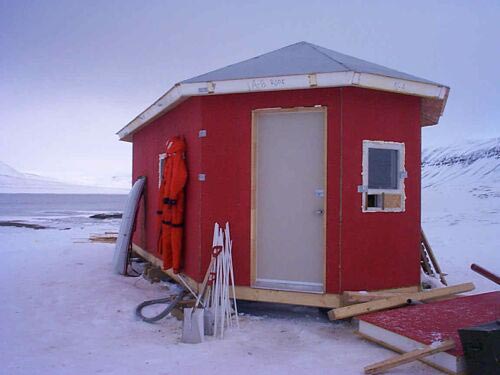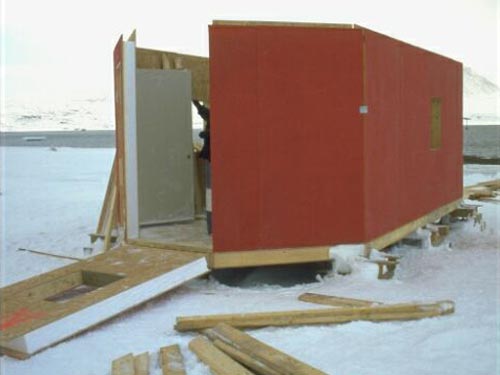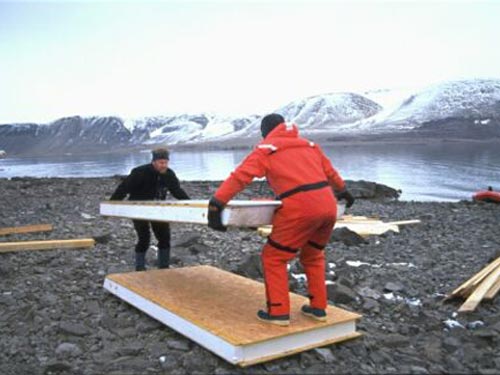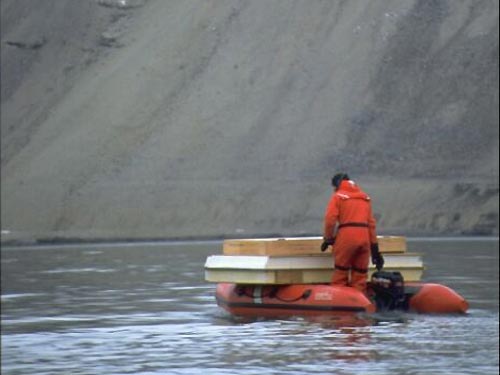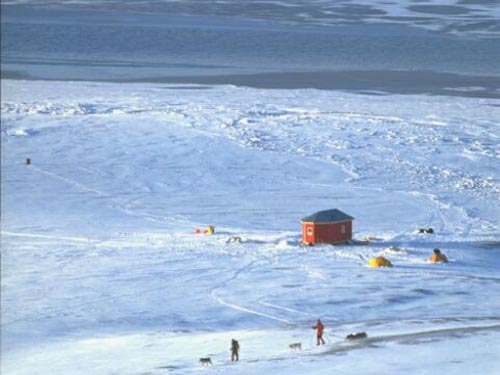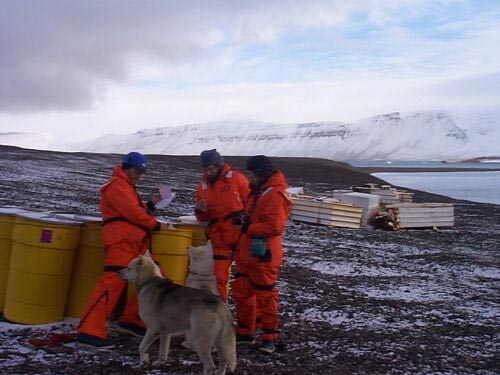Project Overview
| Date | 1999 |
| Size | 1,900 cubic feet |
| Location | Ellesmere Island, Nunavut |
Solutions for the "Howling Arctic"
If you’re spending a long, dark winter in the “howling Arctic”, your choice of living accommodations is critical – not just for comfort but also survival. When a joint team of Canadian and Norwegian scientists spent a year in the most remote reaches of the Canadian North, it turned to Thermapan to protect itself from the elements.
The Otto Sverdrup Centennial Expedition spent a year on Ellesmere Island living in an ice-encrusted sailing vessel and in a specially designed base lodge built entirely with Thermapan SIPs. The team was retracing the steps of Sverdrup, a Norwegian who was a pioneer explorer of the area at the turn of the 20th century. At the same time, the scientists were helping with research for a number of organizations, such as one study on behalf of NASA, which investigated the challenges of living in a confined, isolated and inhospitable climate for a prolonged period of time.
When it came to the building materials for its base lodge, the team relied on Thermapan SIPs. The group chose Thermapan for many of the same reasons traditional builders and homebuyers have been entrusting the company with their building needs: Thermapan’s superior insulation qualities, load tolerances, ease of installation, proven performance under extreme conditions and rock solid reliability.
It needed a reliable but adaptable building material for its base lodge, which aside from the ship, would be the team’s only protection from the -40 to -60 degree Celsius temperatures (-40 to -76°F), howling winds and heavy snows of the Arctic.
Using Thermapan SIPs, the crew built the 1,900 cubic foot structure in a matter of three weeks. Once constructed, the team relied on the lodge for much-needed shelter and comfort.
The Expedition selected Thermapan because of its superior thermal properties, exceptional snow load tolerances and wind resistance capacities. The SIPs were also favoured because the entire structure could be built by the team – whose members were not experienced in home building – in a relatively short time period. This was critical because fast-tracked construction was necessary prior to the setting in of the harsh winter weather.
“We have more than survived,” team members wrote in their journals near the end of their expedition. “In fact, we are getting downright nostalgic at the thought of having to leave this home”.
Thermal Benefits
Thermapan manufactures a SIP system that is constructed of expanded polystyrene (EPS) insulation board laminated between two sheets of oriented strand board (OSB). The system delivers superior energy efficiency forming a structural envelope around the building, protecting against air infiltration and drafts. The SIPs’ continuous solid layer of EPS insulation is a strong thermal barrier to heat loss by condition.
During the expedition, the crew maintained precise records of the lodge’s energy usage, humidity and insulation levels and structural capabilities. In the end, Thermapan SIPs delivered and then some.
The expedition used significantly less heating fuel than originally expected. It could actually safely leave the loge unheated for a day or so. “December’s mean temperature was -30°C (-22°F) with -40s in tremendous wind blows at times. We have left the lodge unheated for the better part of the day in mid-winter – and still returned later to above freezing inside conditions,” the team wrote.
Homeowner Benefits
Of course, builders and homebuyers don’t have to worry about these harsh and extreme conditions. However, the Sverdrup Expedition’s experience is further proof Thermapan SIPs deliver efficiency and comfort.
The Thermapan system can save the customer 30 – 35 percent in energy costs each year. It also provides an exceptional return on investment, as homeowners quickly earn back their initial investment with the savings in heating and air conditioning costs alone.
In traditional stick and bat construction methods, heat conducts through dense materials such as studs and nails, reducing the overall energy efficiency of your home. Gaps in sill plates, top plates, electrical outlets, window jambs, door jambs and even nail holes allow conditioned air to escape and unconditioned air to enter.
Thermapan SIPs’ continuous layer of EPS insulation reduces heat loss. Super-tight connections between panels and other structural components minimize the tiny gaps in construction. Thermapan SIPs consistently outperform traditional stick built wall construction in thermal tests.
Clearly, Thermapan SIPs are the better way to build, and not just in the North Pole!

